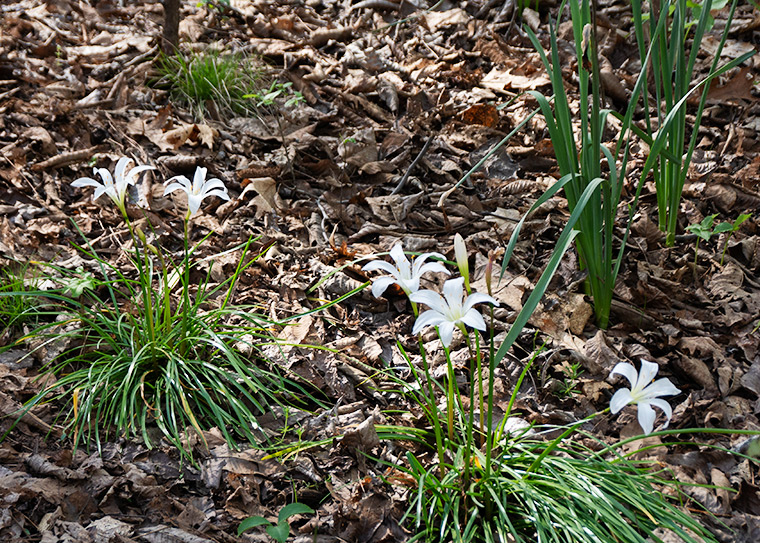
We recently were treated to another wildflower emergence in the woods just outside our garage door. This is Zephranthes atamasca. It has several common names, including rain lily, rain flower, and magic lily. The association with rain is because it often appears after a spring rain.
The generic names is derived from Zephyrus, the Greek god of the west wind, and anthos, meaning “flower”. The specific name “atamasca” is derived from the Native American name for the flower.
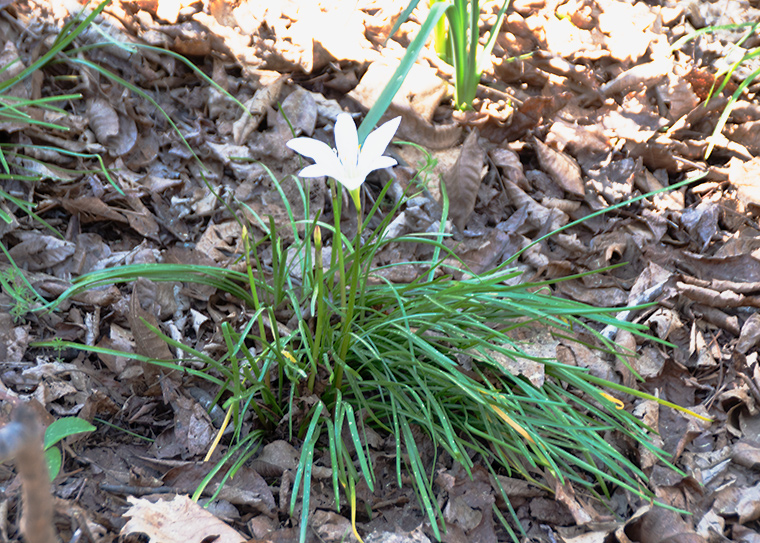
Bulbs give rise to a clump of linear, strap-like leaves, each about 12 inches in length. Flowering stalks, each about arise 12 inches long, arise from the clumps of leaves. Each stalk bears a single flower. The leaves and bulbs of these plants contain a variety of alkaloids which are highly toxic to humans!!
Although the common names often include “lily”, Zephranthes is placed by botanists in the family Amaryllidaceae. So Z. atamasca is an amaryllis rather than a Lily. This is reminiscent of another Surprise Lily which is really an amaryllis. I described this one in an earlier post.
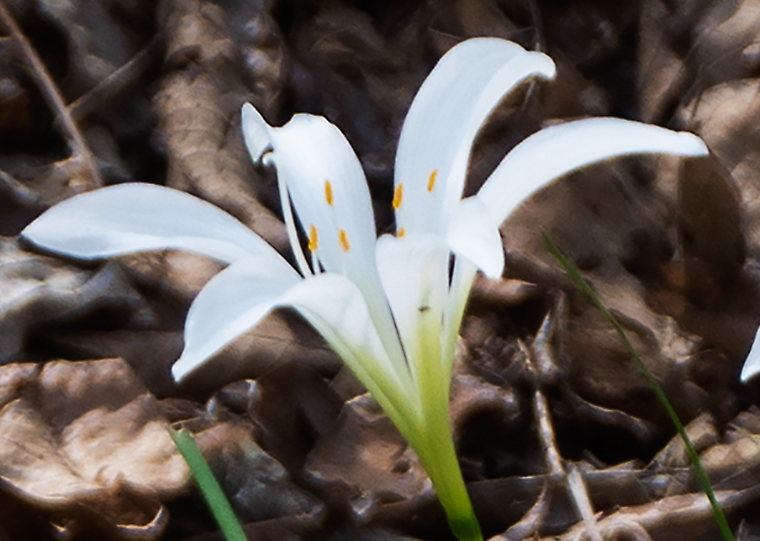
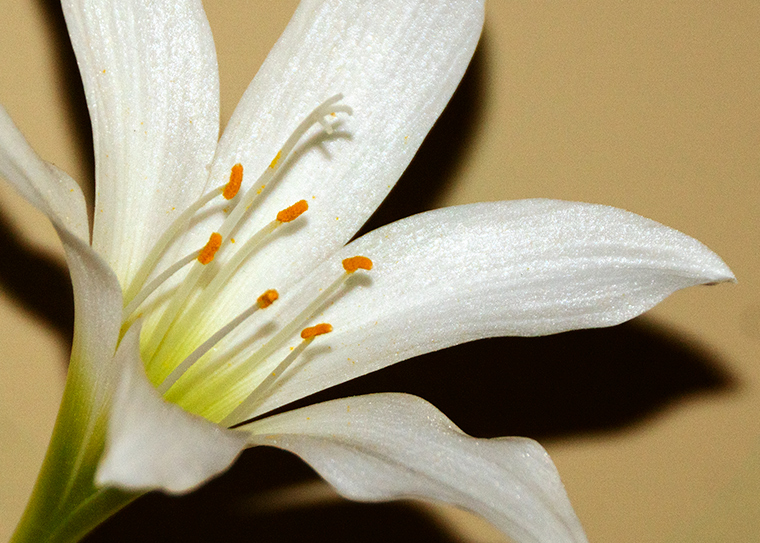
The preceding two photographs show the flower’s each have six stamenss and one style with a stigma at its end. If you look closely, you can see that the stigma is divided into three parts. The anthers at the end of the stamens are full of golden pollen.
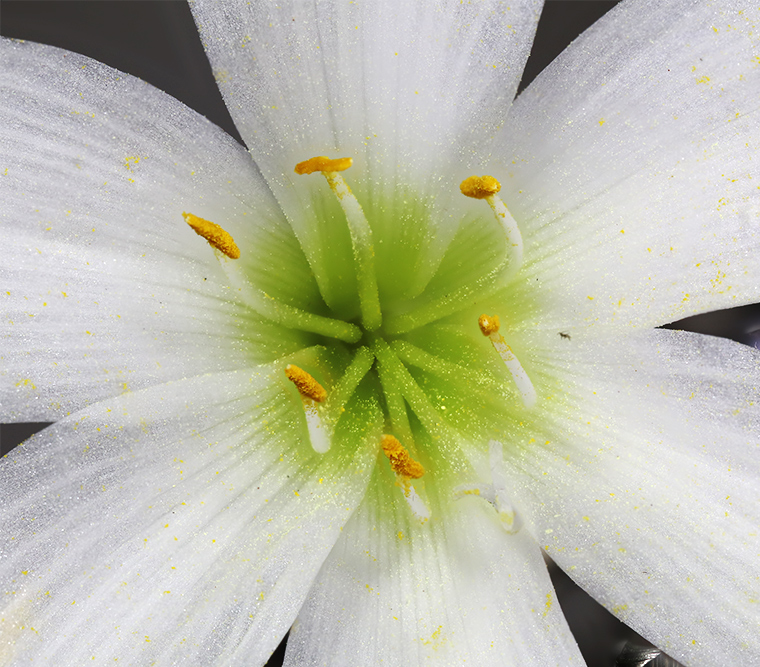
A view down into the flower shows the wonderful symmetry of the flower parts. The white “petals” are arranged in two whorls of three. I say “petals” because botanists might call the lower three structures “sepals” and the upper three “petals”, or they might call all six “tepals”.
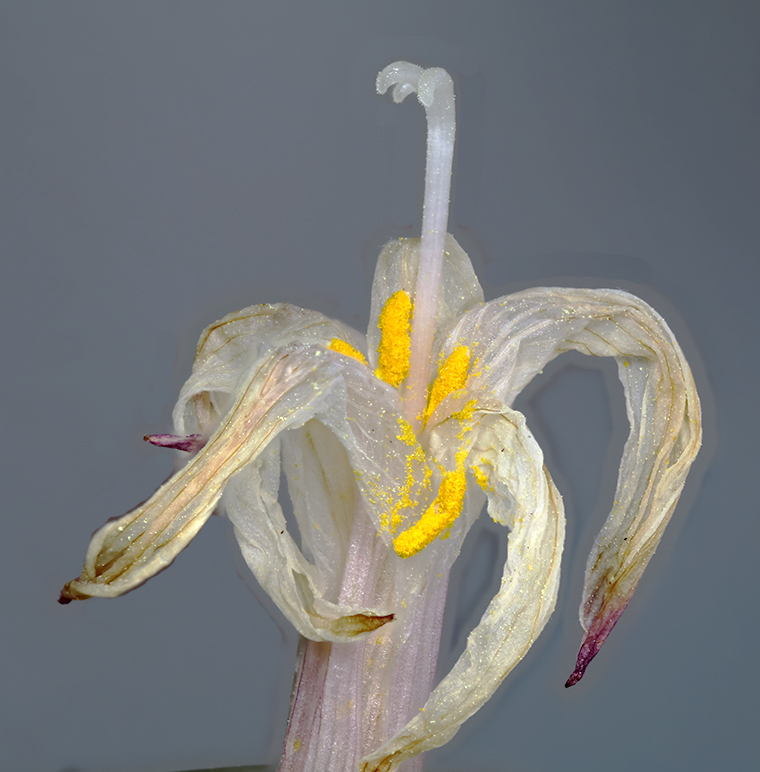
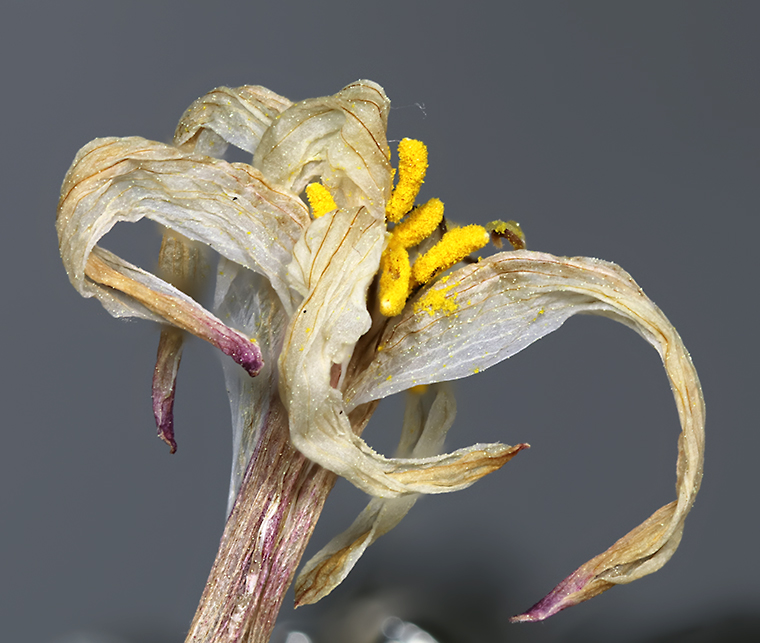
I forgot about a couple of flowers the I HAD brought in the house and put in vases. After some time, I noticed the neglected flowers had wilted. However, the wilted flowers had a beauty all their own to me. Hence the photographs. The top photograph shows the long style protruding high above the flower forlornly waiting for the pollen which will never come. The three parts of the stigma are still evident in this photograph.. In both photographs the stamens stand out quite clearly, and there is a scattering of pollen which has been shed from them.
Discover more from A Naturalist's Journal
Subscribe to get the latest posts to your email.

Thanks Gary, Very beautiful.